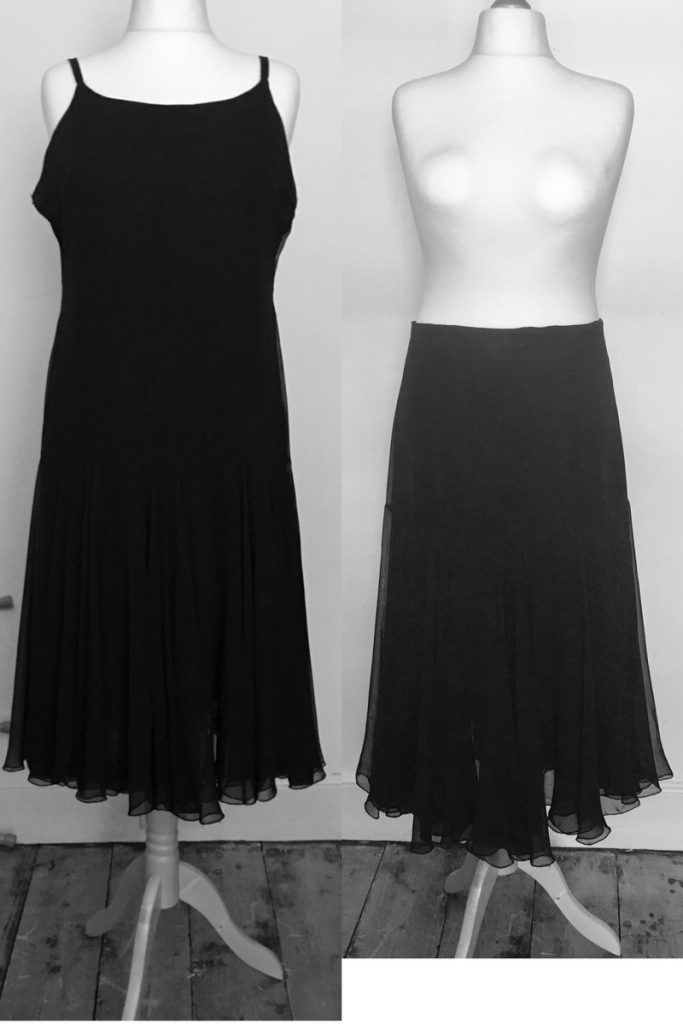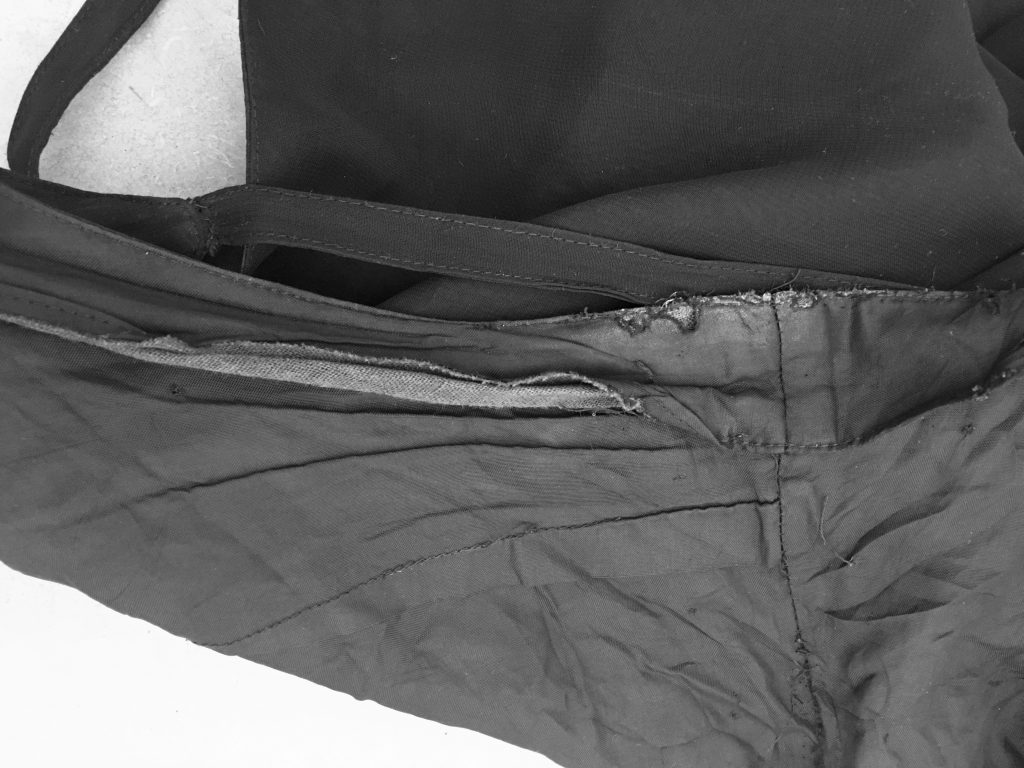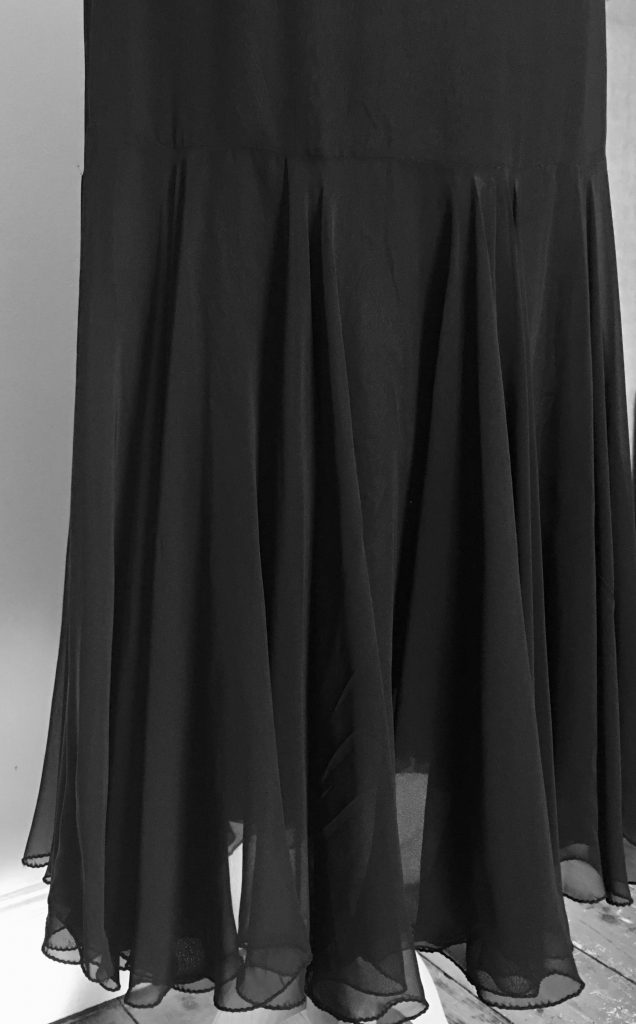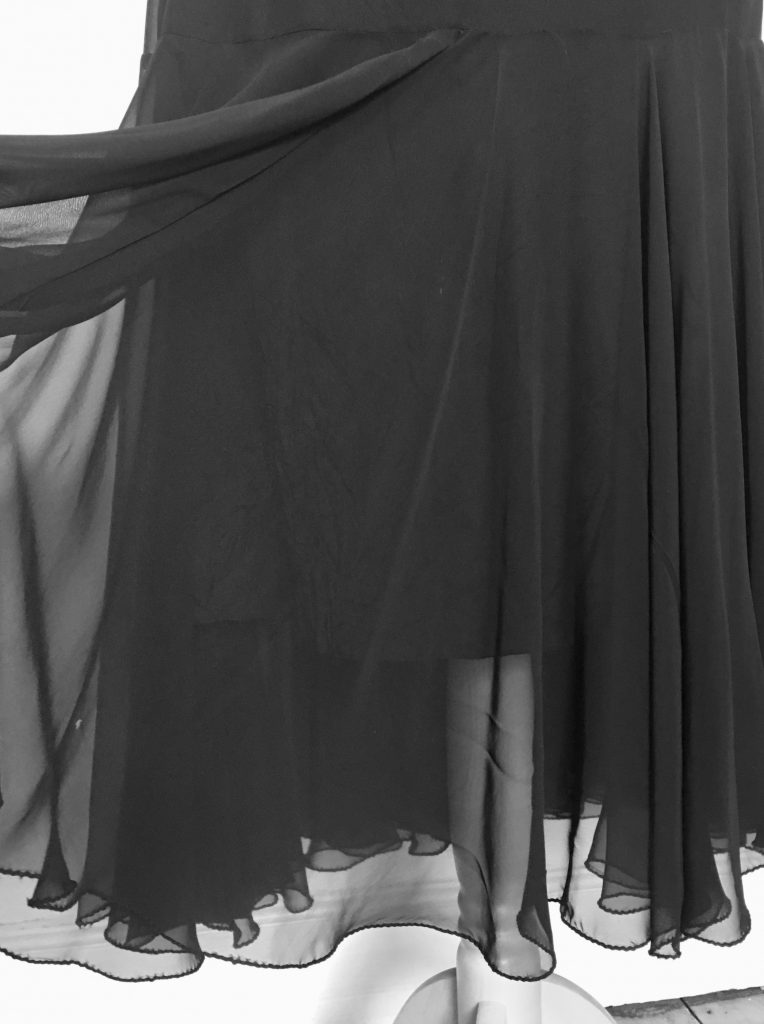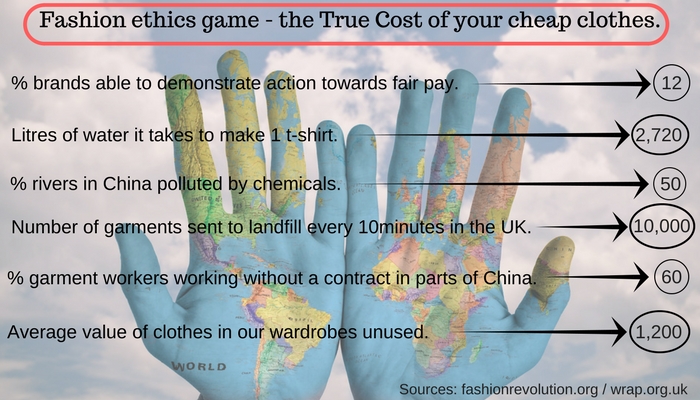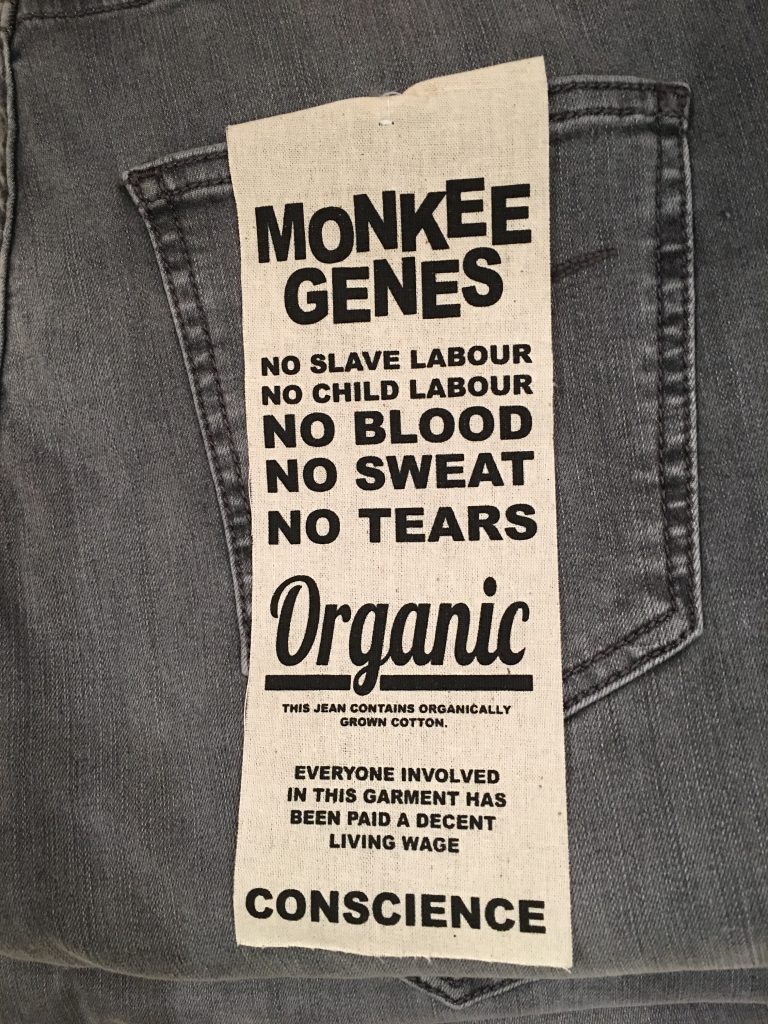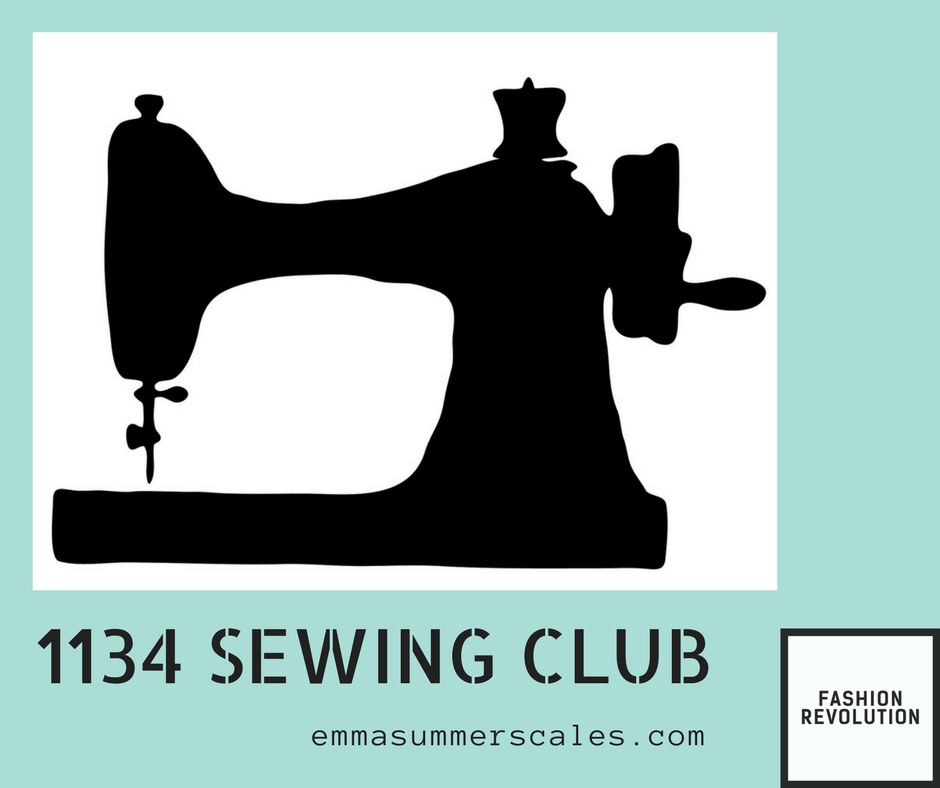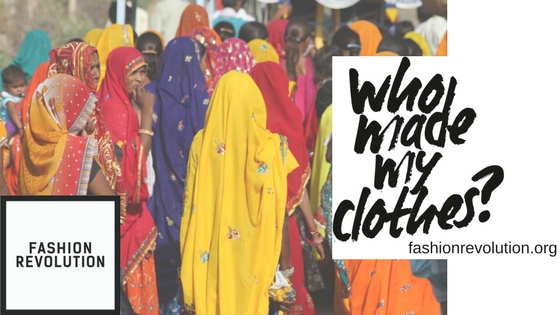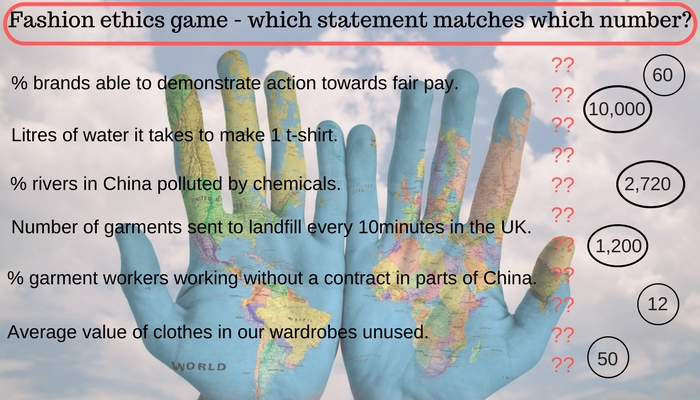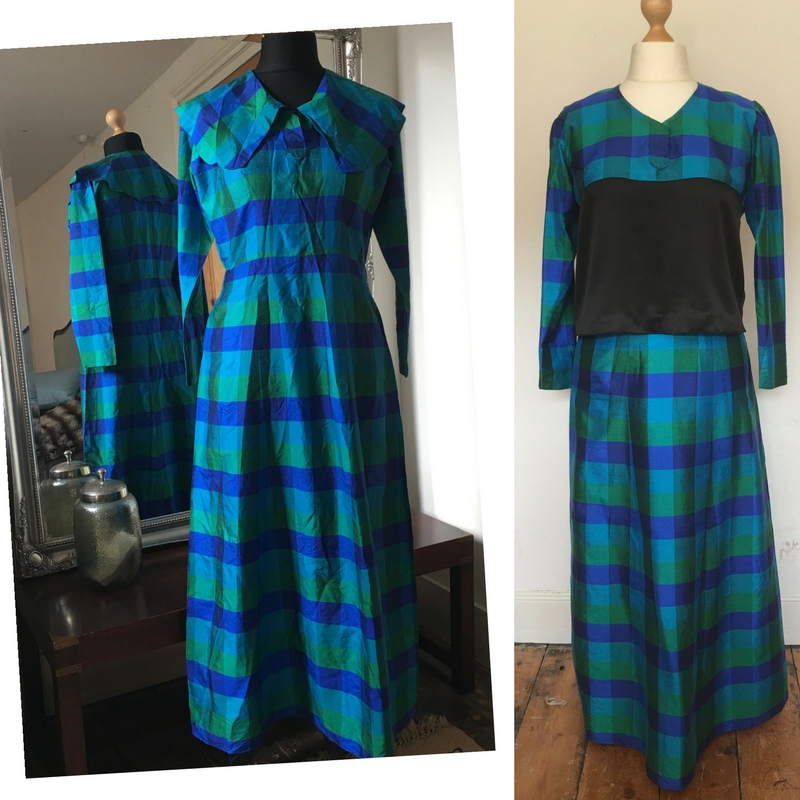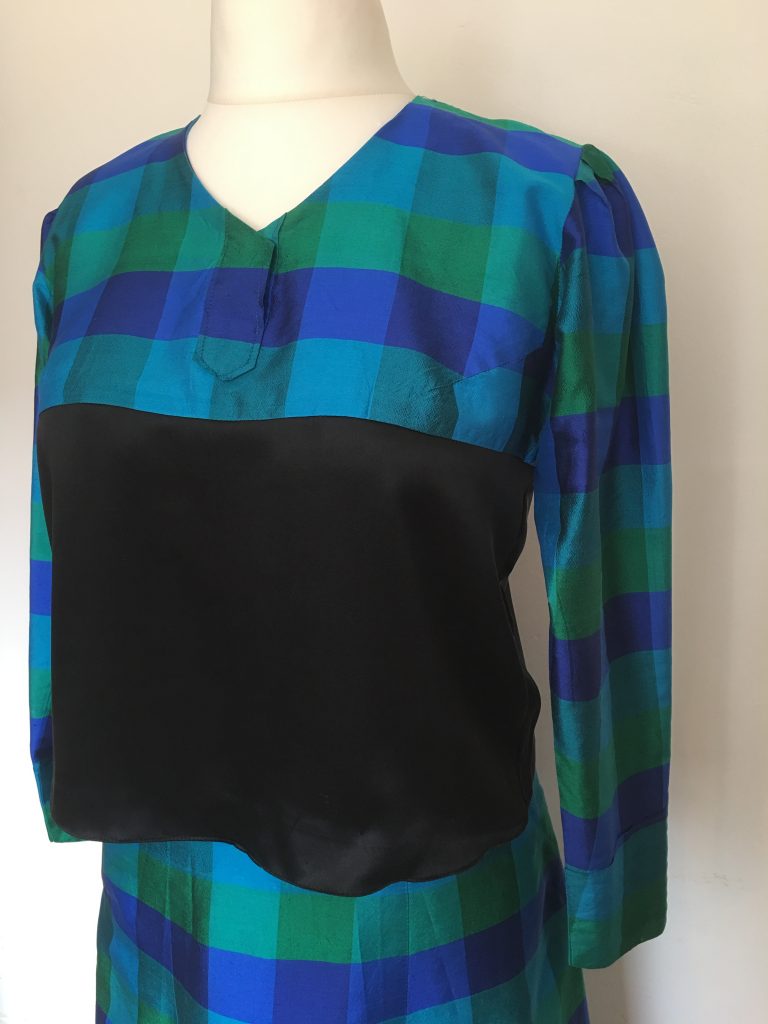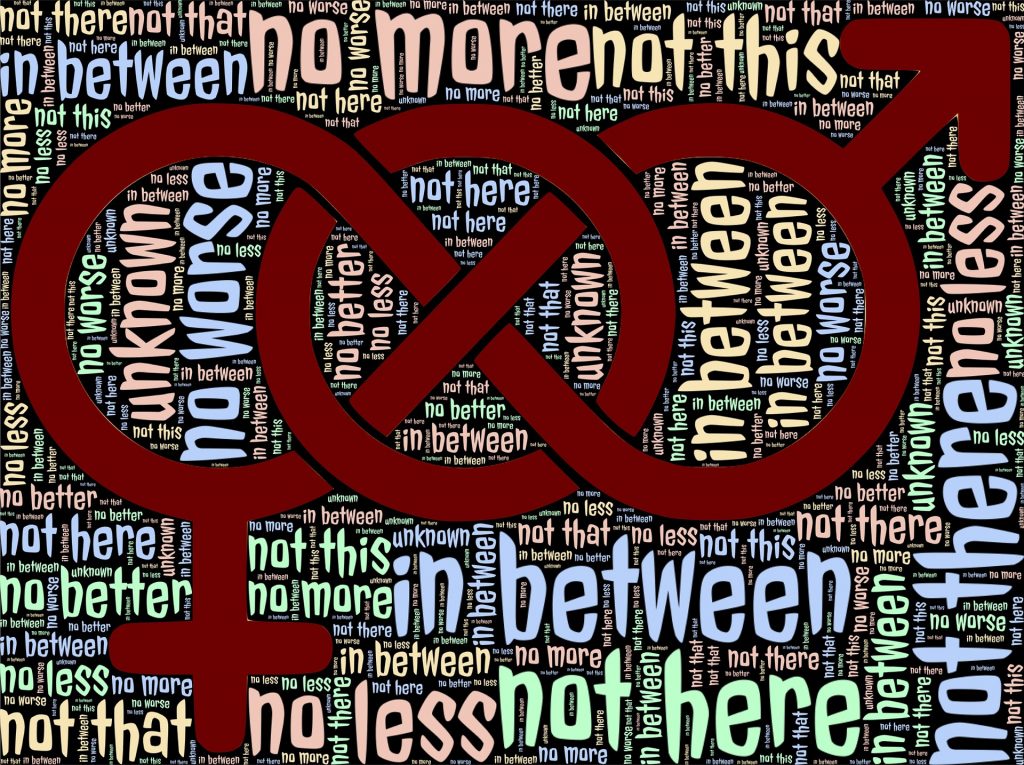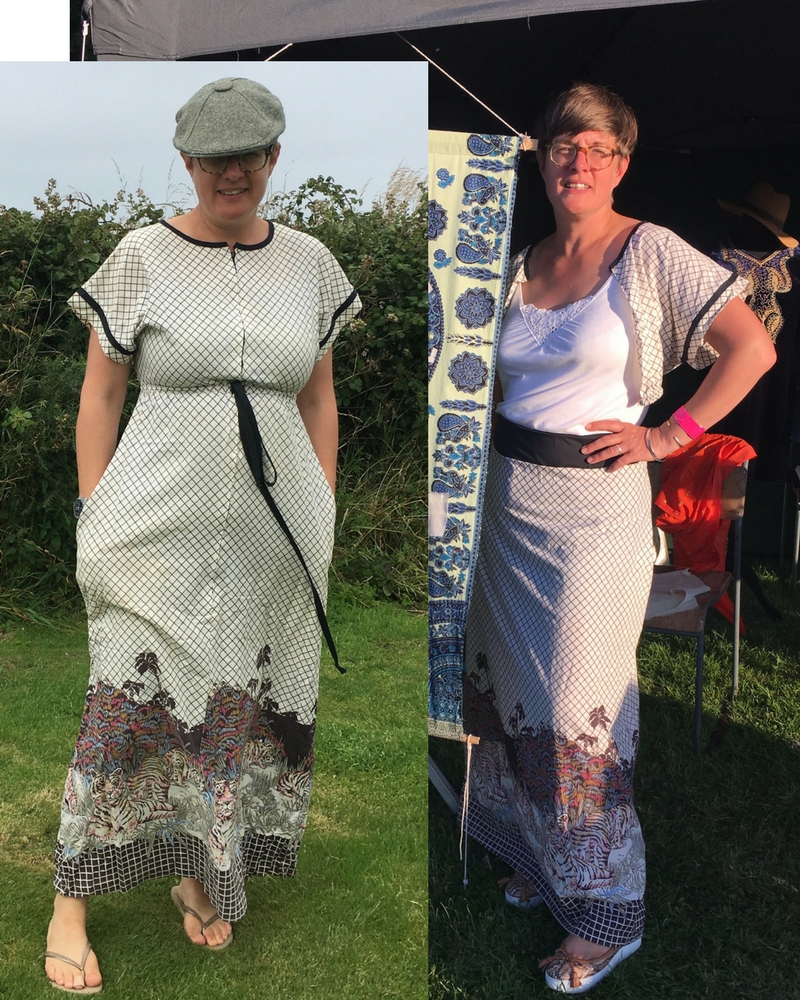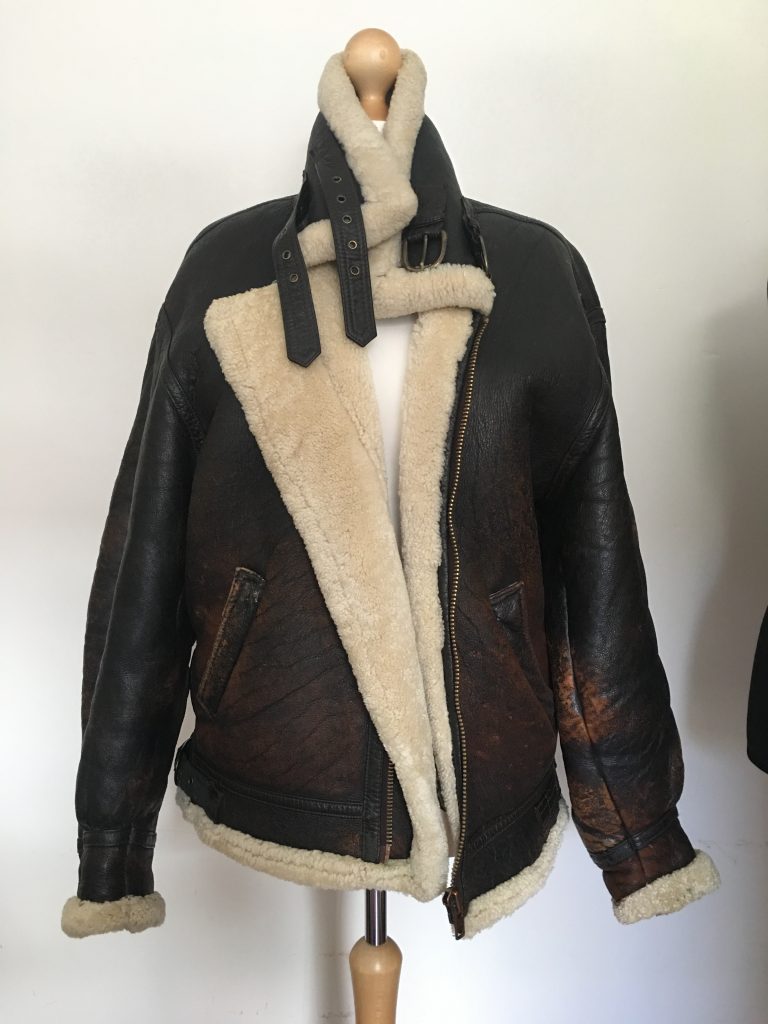
This jacket belongs to a friend. When I asked him for the “story” behind it, he gave me two versions to chose from.
Version 1 “When I was a fighter pilot in the Vietnam War I was shot down over enemy territory and held captive for 3 years. They took my jacket but 25 years later I visited as a tourist and amazingly found MY jacket for sale in a flea market.”
I was amused by the contrast and I think perhaps this says more about him than if I’d pressed him for any further background to the true story so I decided to use his first response and include both versions in this post. Interestingly I think it was J who was wearing it when it got caught as she was getting out of the car and the leather was torn.

A repair for #menditmay
I’m a member of a Fb group called Mend it May, started by ethical blogger Jen Gale, encouraging us all to mend something during the month of May.
I found a YouTube video made by Leather Repair Company about repairing a leather jacket but couldn’t find anything that showed a repair to a sheepskin, so I contacted the company and they were really helpful. Based on their advice, this is what I did …

1. Removed the buckle and strap.
2. Trimmed the fur from the edges of the tear and loosely stitched them together to hold them temporarily in place so that I could patch over the tear.
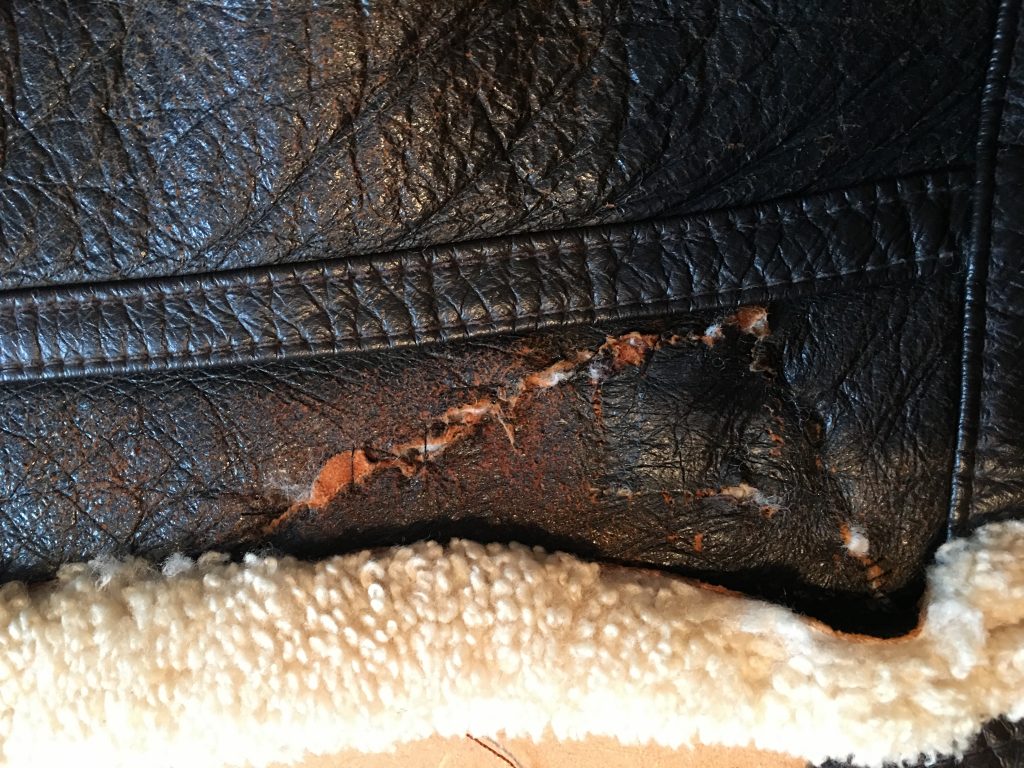
3. I searched the Charity Shops for a similar leather to take a patch from. I found a handbag that was a close match but nothing close enough to do a proper job. So I cut a section out of the inside pocket, where it wouldn’t be seen and used the bag to patch the pocket.
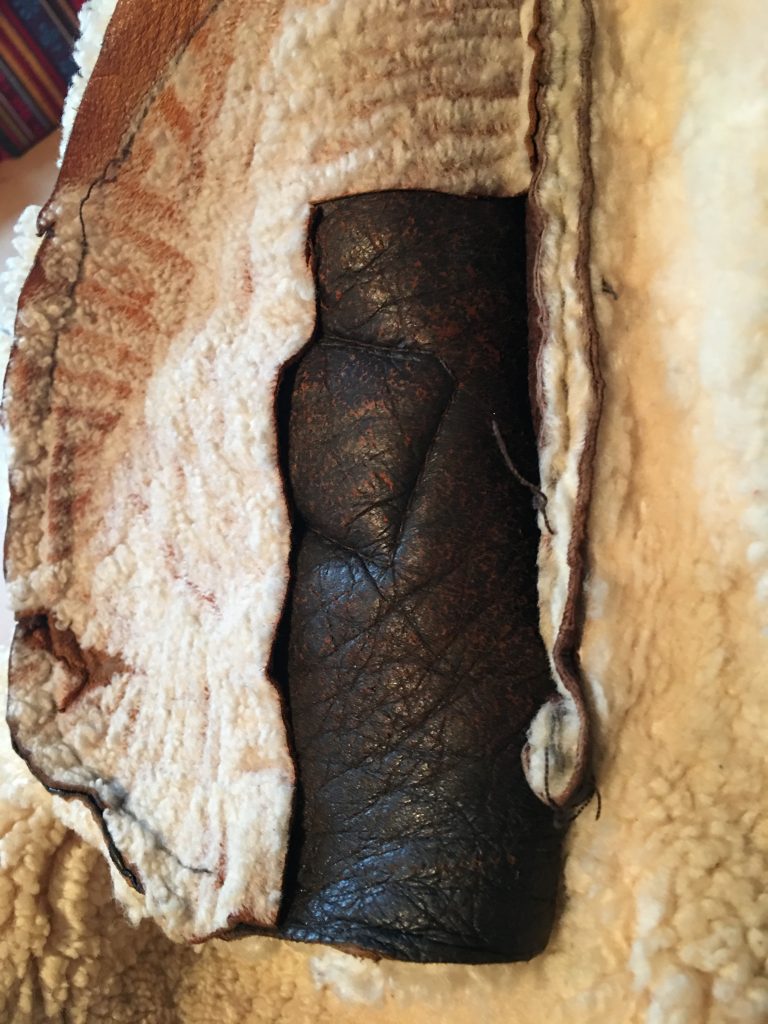
4. I used specialist leather glue to patch over the tear. I cut it on an angle so it followed the lines on the jacket and as it was such soft leather I was able to work into the join a little to blend it in. I took out the top stitching and tucked the patch underneath the edge of the cover strips.
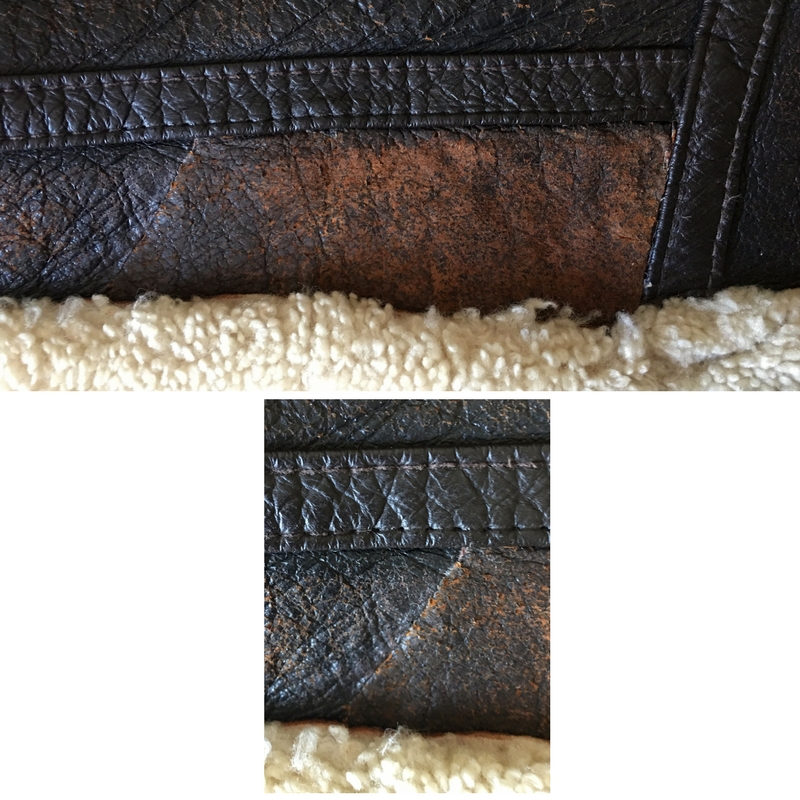
5. I restitched the buckle and strap in place and replaced the top stitch to secure the patch and finish as original.
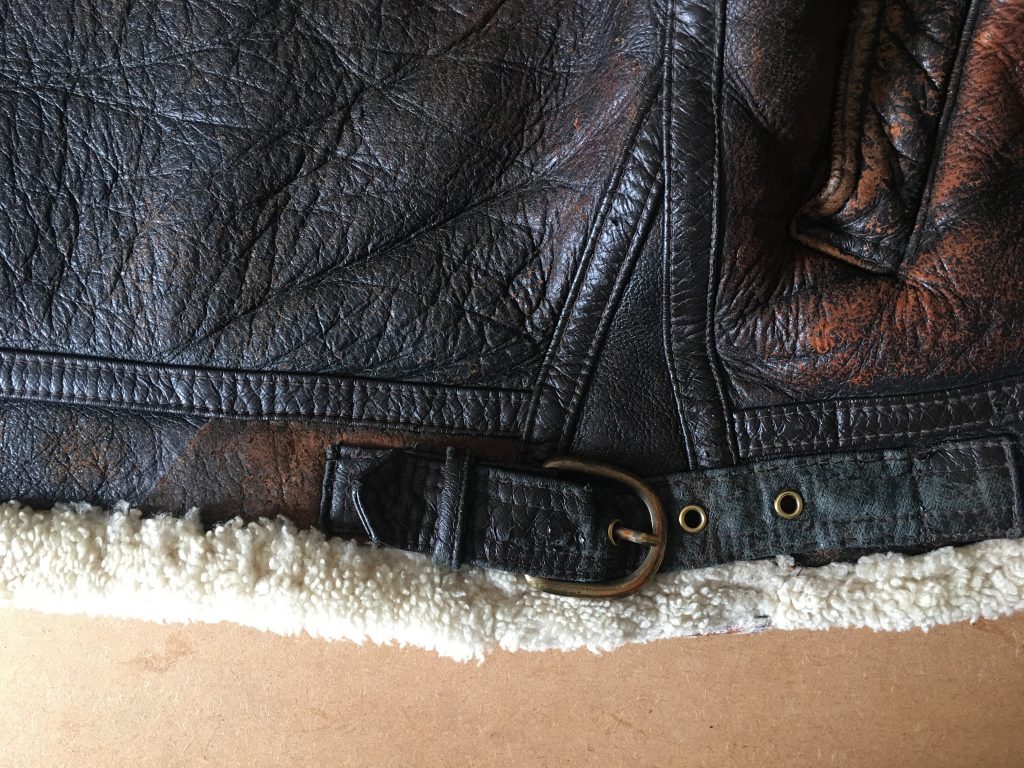
6. I also stitched down the straps so there is less risk of them getting caught again.
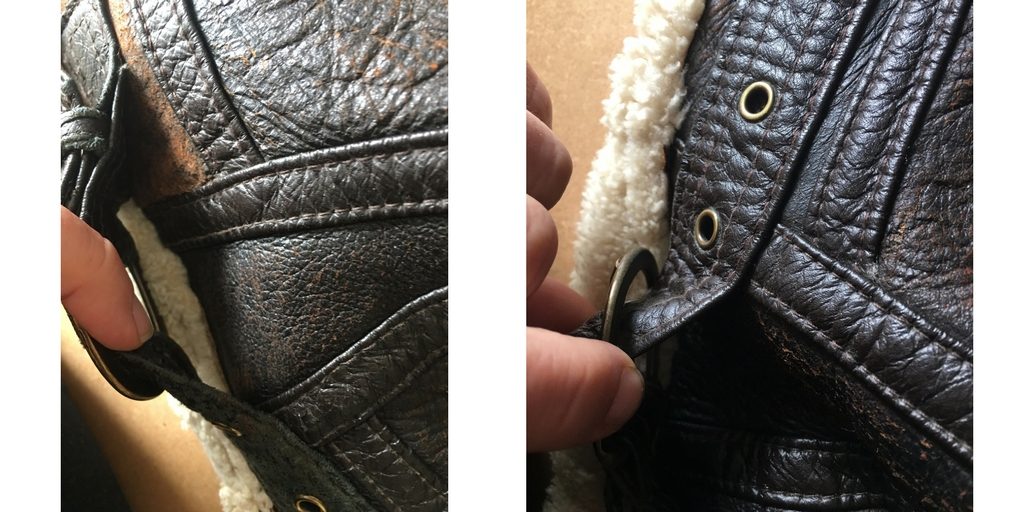
7. The final task was to repair the pocket with a patch from the handbag. I glued the straight edges and then stitched at the bottom and seam edge.
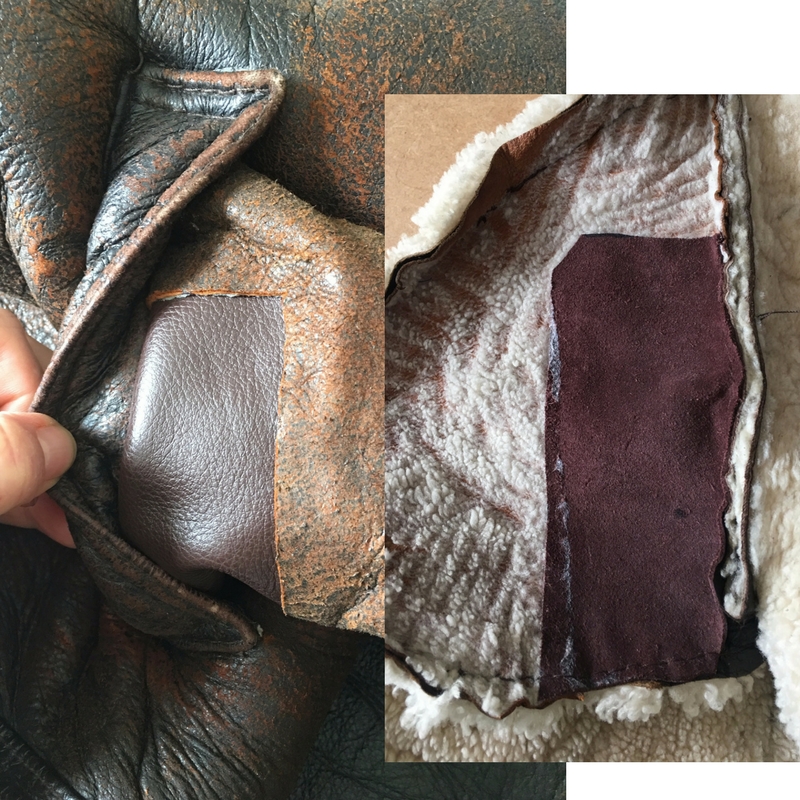
I really enjoyed this repair, I’d never worked with leather before and learnt a lot.
And it’s such a joy to bring a treasured possession back to life (yes A, I know you love this jacket, I can tell when you wear it, despite covering up with a funny story and playing it down with your Ebay story)
